 DeployService is an adware program targeting macOS users. Designed to sneak into your machine in a concealed manner, the program could generate pop-up ads. It could also change your browser’s settings to display its own search engine and new tab page. Symptoms of adware “infections” could vary depending on the condition of your device, and the presence of additional potentially unwanted programs (PUPs or PUAs).
DeployService is an adware program targeting macOS users. Designed to sneak into your machine in a concealed manner, the program could generate pop-up ads. It could also change your browser’s settings to display its own search engine and new tab page. Symptoms of adware “infections” could vary depending on the condition of your device, and the presence of additional potentially unwanted programs (PUPs or PUAs).
Is DeployService a Virus?
No, adware and PUPs such as DeployService are not computer viruses. However, due to their annoying and often unwanted appearance, users tend to refer to them as “viruses.”
Also note that, despite adware is not malicious, it could lead to more serious troubles with your Mac. If the adware causes redirects in the browser, it could take you to a scam page prompting you to perform a specific action. This action could be clicking on a button or agreeing to receive push notifications. In case of a tech-support scam scenario, you could be redirected to a page claiming that “a virus have been detected on your device.”
Other similar threats include FocusDeploy adware and PlatformDeploy.

DeployService Summary
| Name | DeployService |
| Type | Browser Redirect, Potentially Unwanted App, Adware |
| Short Description | Each browser application on your Mac could get affected. The app can redirect you and will display lots of advertisements. |
| Symptoms | Browser settings may be altered to display ads, fake warnings and/or push notifications. |
| Distribution Method | Freeware Installations, Bundled Packages |
| Detection Tool |
See If Your System Has Been Affected by malware
Download
Malware Removal Tool
|
| User Experience | Join Our Forum to Discuss DeployService. |
DeployService Adware – Distribution on Macs
Distribution Methods
DeployService can be delivered through different ways, such as through third-party installations. Such installer setups come from bundled applications and freeware that could be set to install additional content by default. Usually, this could happen without any notification. You might have tried installing a media player or free software and got your browser settings modified by the unwanted app.
As a result of having DeployService installed on your Mac, the default search engine for your browsers may load a redirect.
Also note that DeployService may show up in your browsers’ home page immediately after you have installed an unwanted software bundle. The bundle will most likely contain redirects in your browsers and may even contain malware.
What is the outcome of having a PUA such as DeployService run on your Mac?
The AlgorithmFormula adware will redirect you if you use its services and interact with Web links, advertisements and other content from its search pages. Be aware that each search that you do on its pages may be sending information to servers connected to this browser hijacker. The pages displayed in an image further below can replace the homepage, new tab and default search of every browser that you have installed.
The website associated with DeployService can push advertisements and lots of redirects that can put browser cookies on your Mac system, and they can track your online activity. Other, more advanced tracking technologies could have been used, too. Be wary of the information you provide on such search pages, especially on ones, associated with the browser hijacker. Refrain from clicking on suspicious advertisements and links that can pop up.

Remove DeployService from Your Mac
To remove DeployService manually, we recommend that you use a specific anti-malware application developed specifically for Mac machines. The main goal of such a program is to scan your macOS and uninstall or terminate the files with malicious behavior, and also clean up any malicious code in your repositories. Finally, with a specific anti-malware program, your machine will be better protected against online intruders.
Steps to Prepare Before Removal:
Before starting to follow the steps below, be advised that you should first do the following preparations:
- Backup your files in case the worst happens.
- Make sure to have a device with these instructions on standy.
- Arm yourself with patience.
- 1. Scan for Mac Malware
- 2. Uninstall Risky Apps
- 3. Clean Your Browsers
Step 1: Scan for and remove DeployService files from your Mac
When you are facing problems on your Mac as a result of unwanted scripts and programs such as DeployService, the recommended way of eliminating the threat is by using an anti-malware program. SpyHunter for Mac offers advanced security features along with other modules that will improve your Mac’s security and protect it in the future.
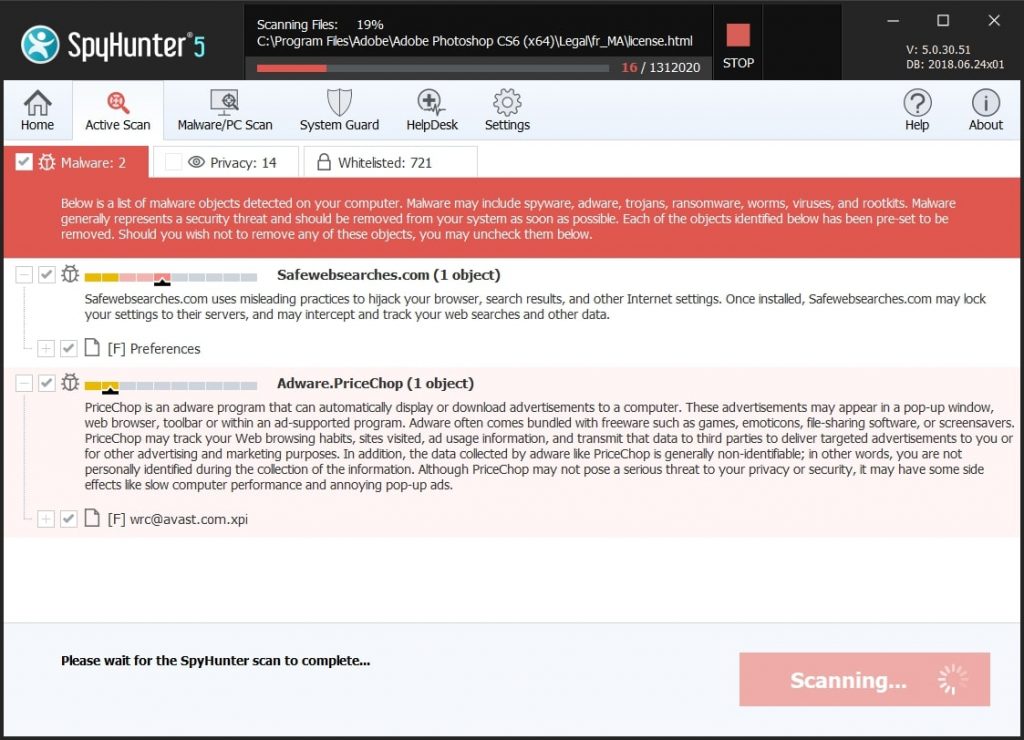
Quick and Easy Mac Malware Video Removal Guide
Bonus Step: How to Make Your Mac Run Faster?
Mac machines maintain probably the fastest operating system out there. Still, Macs do become slow and sluggish sometimes. The video guide below examines all of the possible problems that may lead to your Mac being slower than usual as well as all of the steps that can help you to speed up your Mac.
Step 2: Uninstall DeployService and remove related files and objects
1. Hit the ⇧+⌘+U keys to open Utilities. Another way is to click on “Go” and then click “Utilities”, like the image below shows:

2. Find Activity Monitor and double-click it:
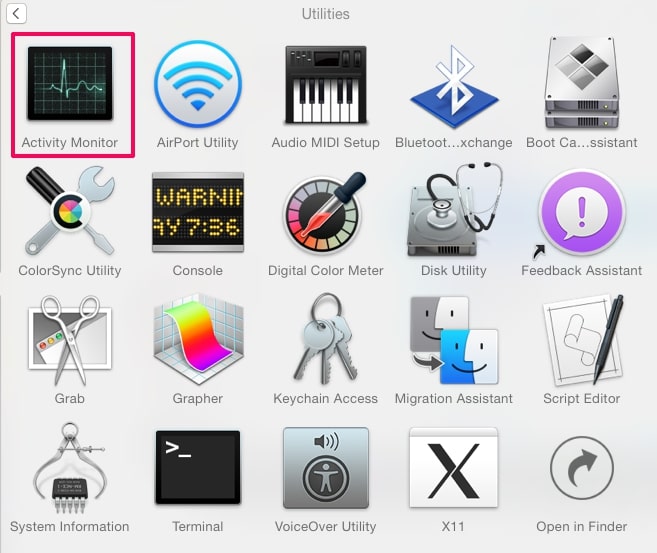
3. In the Activity Monitor look for any suspicious processes, belonging or related to DeployService:
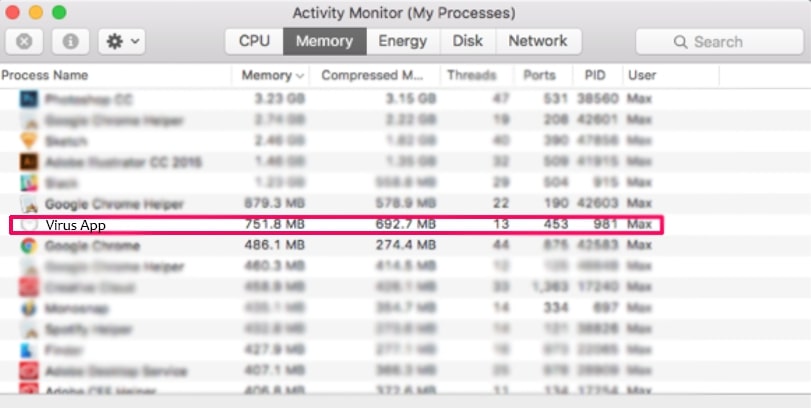
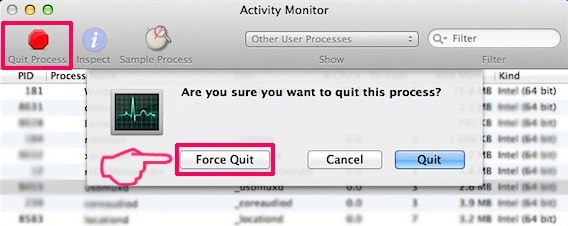
4. Click on the "Go" button again, but this time select Applications. Another way is with the ⇧+⌘+A buttons.
5. In the Applications menu, look for any suspicious app or an app with a name, similar or identical to DeployService. If you find it, right-click on the app and select “Move to Trash”.
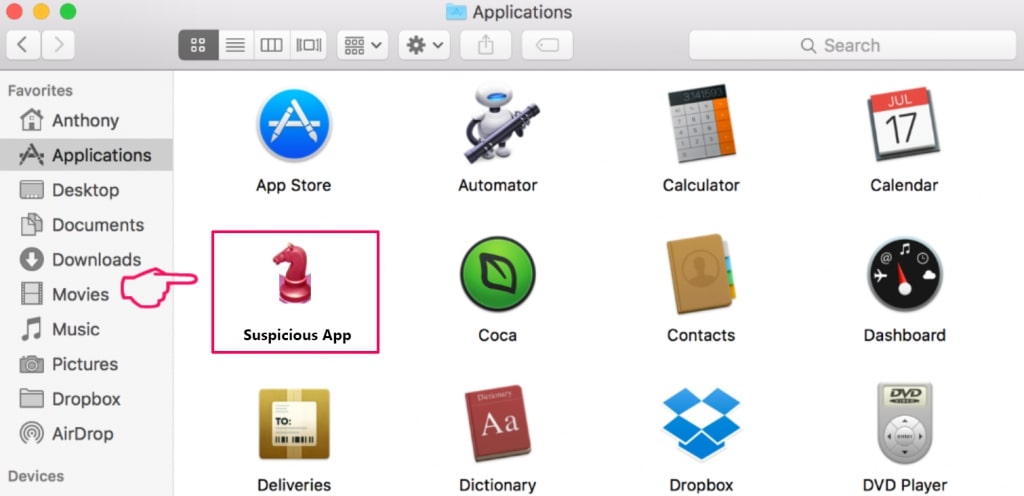
6. Select Accounts, after which click on the Login Items preference. Your Mac will then show you a list of items that start automatically when you log in. Look for any suspicious apps identical or similar to DeployService. Check the app you want to stop from running automatically and then select on the Minus (“-“) icon to hide it.
7. Remove any leftover files that might be related to this threat manually by following the sub-steps below:
- Go to Finder.
- In the search bar type the name of the app that you want to remove.
- Above the search bar change the two drop down menus to “System Files” and “Are Included” so that you can see all of the files associated with the application you want to remove. Bear in mind that some of the files may not be related to the app so be very careful which files you delete.
- If all of the files are related, hold the ⌘+A buttons to select them and then drive them to “Trash”.
In case you cannot remove DeployService via Step 1 above:
In case you cannot find the virus files and objects in your Applications or other places we have shown above, you can manually look for them in the Libraries of your Mac. But before doing this, please read the disclaimer below:
1. Click on "Go" and Then "Go to Folder" as shown underneath:
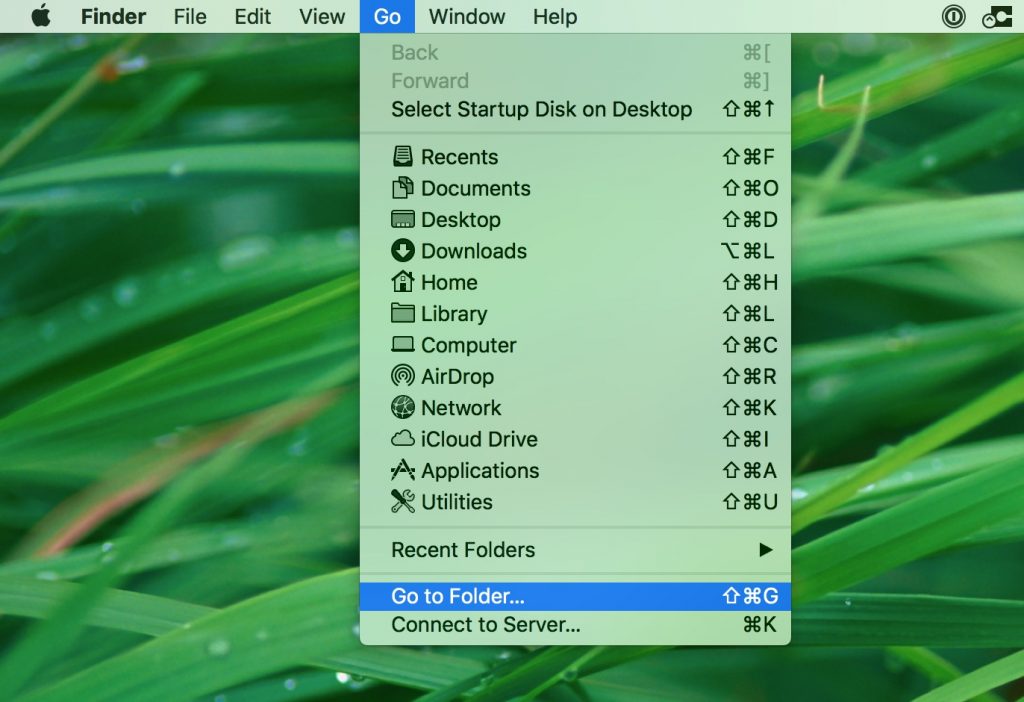
2. Type in "/Library/LauchAgents/" and click Ok:
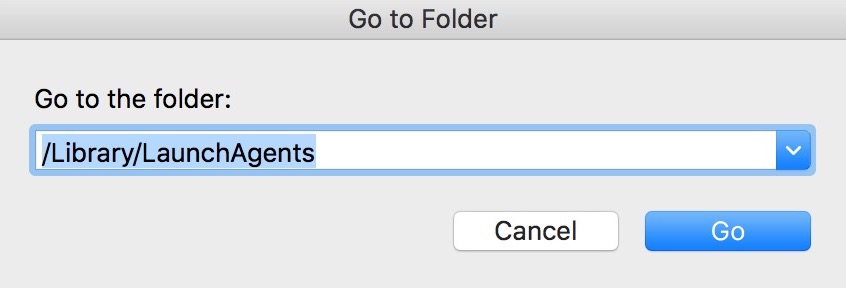
3. Delete all of the virus files that have similar or the same name as DeployService. If you believe there is no such file, do not delete anything.
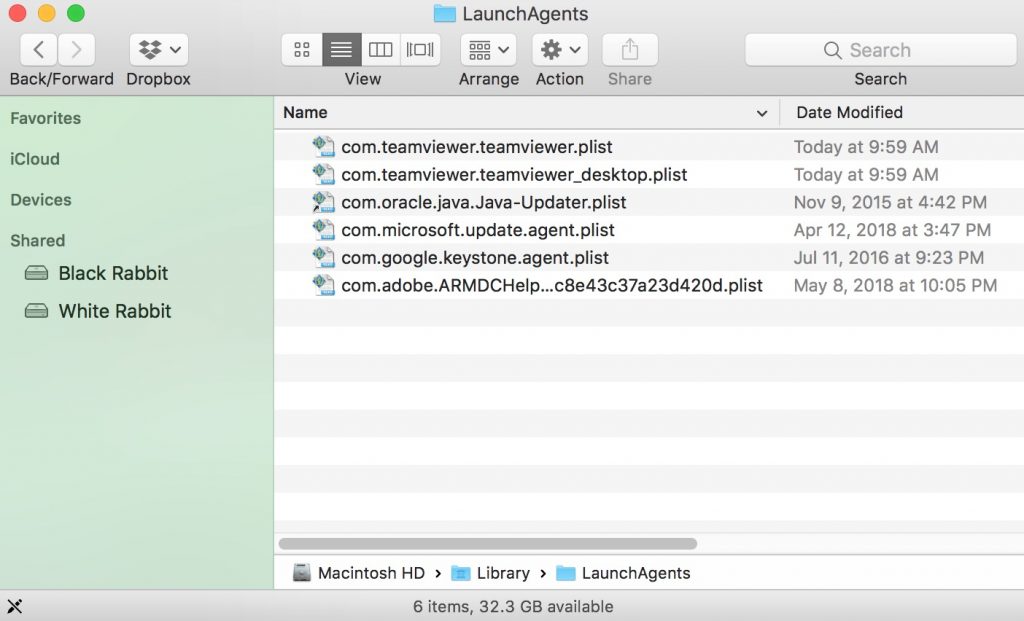
You can repeat the same procedure with the following other Library directories:
→ ~/Library/LaunchAgents
/Library/LaunchDaemons
Tip: ~ is there on purpose, because it leads to more LaunchAgents.
Step 3: Remove DeployService – related extensions from Safari / Chrome / Firefox
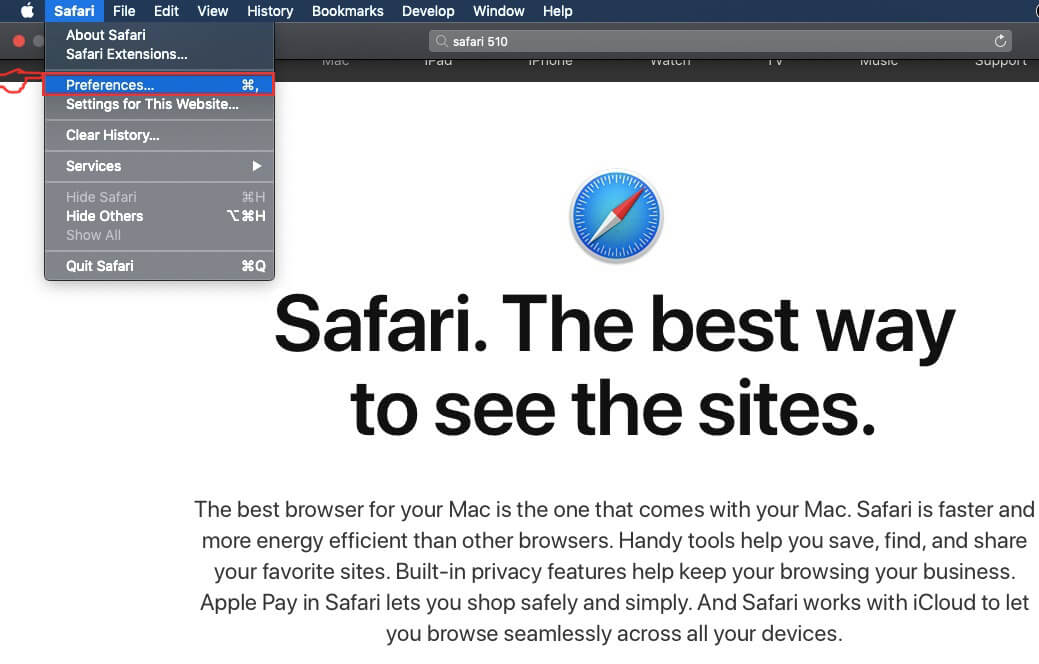

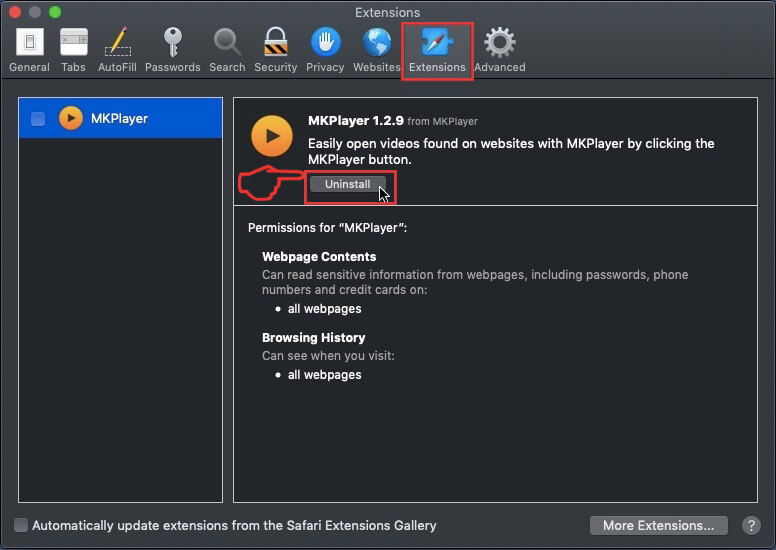
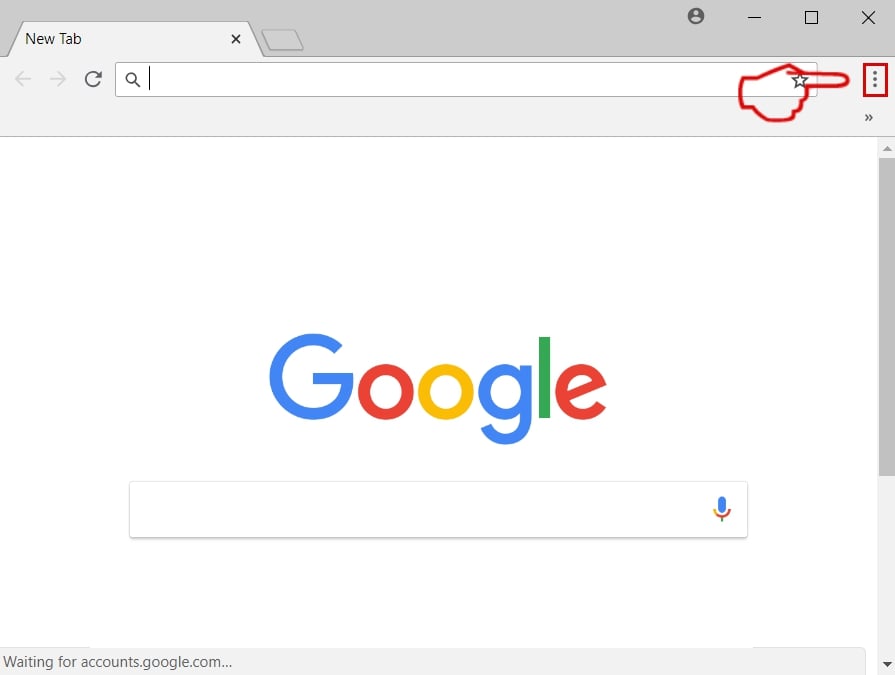
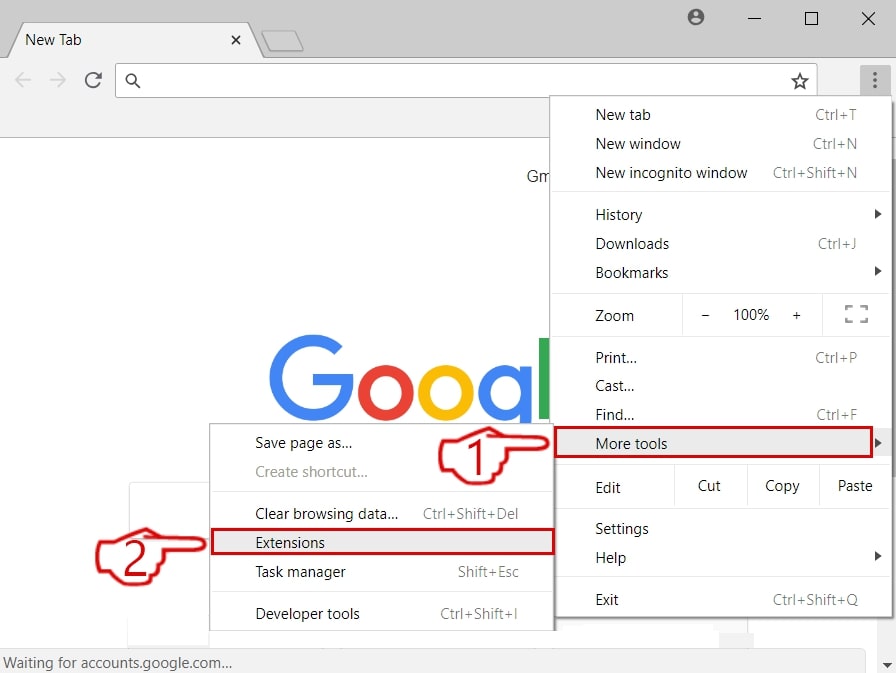
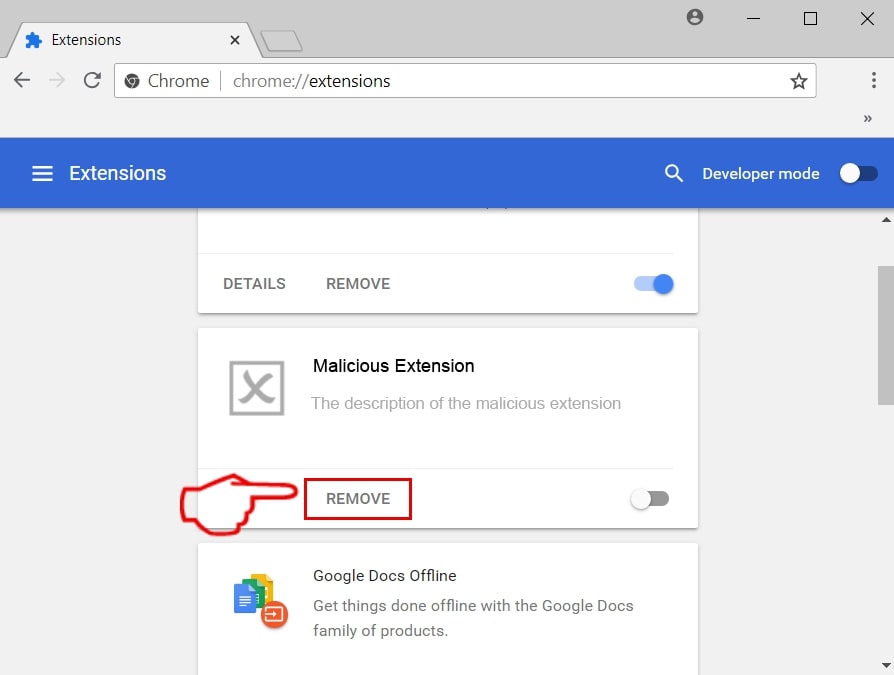
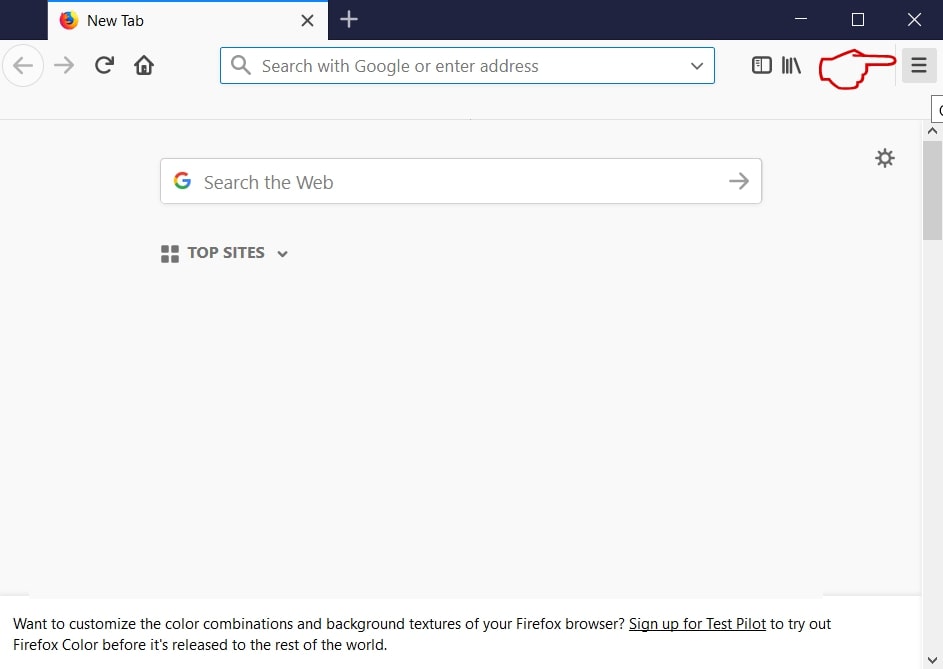
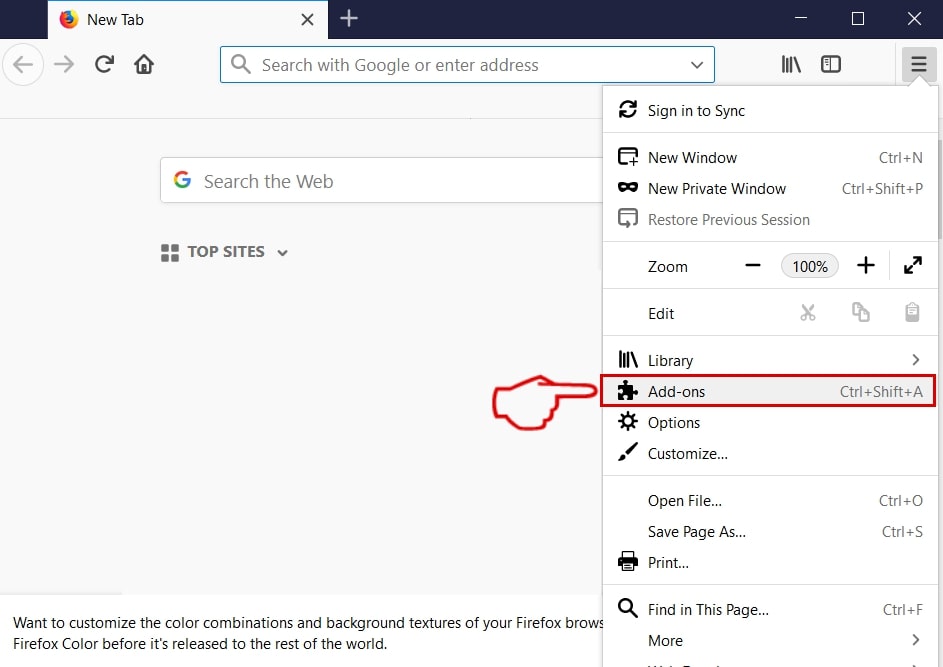
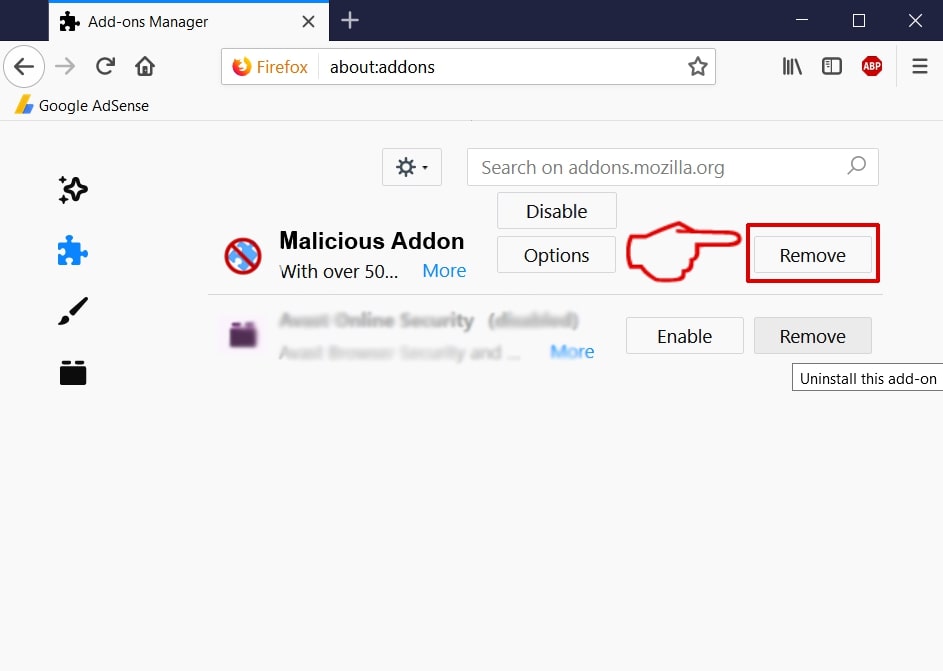
DeployService-FAQ
What is DeployService on your Mac?
The DeployService threat is probably a potentially unwanted app. There is also a chance it could be related to Mac malware. If so, such apps tend to slow your Mac down significantly and display advertisements. They could also use cookies and other trackers to obtain browsing information from the installed web browsers on your Mac.
Can Macs Get Viruses?
Yes. As much as any other device, Apple computers do get malware. Apple devices may not be a frequent target by malware authors, but rest assured that almost all of the Apple devices can become infected with a threat.
What Types of Mac Threats Are There?
According to most malware researchers and cyber-security experts, the types of threats that can currently infect your Mac can be rogue antivirus programs, adware or hijackers (PUPs), Trojan horses, ransomware and crypto-miner malware.
What To Do If I Have a Mac Virus, Like DeployService?
Do not panic! You can easily get rid of most Mac threats by firstly isolating them and then removing them. One recommended way to do that is by using a reputable malware removal software that can take care of the removal automatically for you.
There are many Mac anti-malware apps out there that you can choose from. SpyHunter for Mac is one of the reccomended Mac anti-malware apps, that can scan for free and detect any viruses. This saves time for manual removal that you would otherwise have to do.
How to Secure My Data from DeployService?
With few simple actions. First and foremost, it is imperative that you follow these steps:
Step 1: Find a safe computer and connect it to another network, not the one that your Mac was infected in.
Step 2: Change all of your passwords, starting from your e-mail passwords.
Step 3: Enable two-factor authentication for protection of your important accounts.
Step 4: Call your bank to change your credit card details (secret code, etc.) if you have saved your credit card for online shopping or have done online activiites with your card.
Step 5: Make sure to call your ISP (Internet provider or carrier) and ask them to change your IP address.
Step 6: Change your Wi-Fi password.
Step 7: (Optional): Make sure to scan all of the devices connected to your network for viruses and repeat these steps for them if they are affected.
Step 8: Install anti-malware software with real-time protection on every device you have.
Step 9: Try not to download software from sites you know nothing about and stay away from low-reputation websites in general.
If you follow these reccomendations, your network and Apple devices will become significantly more safe against any threats or information invasive software and be virus free and protected in the future too.
More tips you can find on our MacOS Virus section, where you can also ask any questions and comment about your Mac problems.
About the DeployService Research
The content we publish on SensorsTechForum.com, this DeployService how-to removal guide included, is the outcome of extensive research, hard work and our team’s devotion to help you remove the specific macOS issue.
How did we conduct the research on DeployService?
Please note that our research is based on an independent investigation. We are in contact with independent security researchers, thanks to which we receive daily updates on the latest malware definitions, including the various types of Mac threats, especially adware and potentially unwanted apps (PUAs).
Furthermore, the research behind the DeployService threat is backed with VirusTotal.
To better understand the threat posed by Mac malware, please refer to the following articles which provide knowledgeable details.


